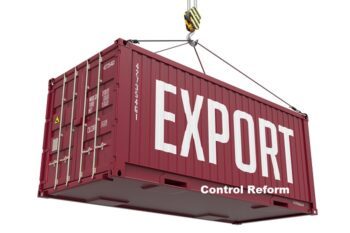By: Bruce H. Leeds, Senior Counsel
Export Control Reform has been with us for more than a year. As a result, export compliance personnel affected by the change must make some significant changes to how they handle exports and process licenses. Maybe it’s time to take another look at the transition rules in order to determine what may need to be done.
The transition rules allowed for two years to complete the transition. During that time exporters could go on using licenses approved prior to when the U.S. Munitions List (USML) and Commerce Control List (CCL) changes took effect. An alternative was to terminate existing licenses and apply for new licenses under the revised USML and CCL provisions or qualify for a license exception.
Well…take a look at the calendar. The clock on the two year period began on the date the revised provisions took effect. For articles and technical data in the first round of changes, such as military aircraft and parts in USML Category VIII, the two years will expire on Oct. 14 of this year. After that date, all licenses and exports must be done under the revised provisions.
If you have been exporting under pre-existing Department of State licenses, you must check the expiration date and current balances on those licenses. Are they still valid? Will they expire or be used up in the near future? If yes, start applying for new licenses under the revised regulations. Also keep in mind how long it will take to draft a new license application, submit it to the government, and get it approved. That could easily be four months or more, so plan accordingly.
A significant outcome of Export Control Reform was that many articles previously subject to ITAR controls under the USML were transferred to the CCL and may now be eligible for license exception STA (Strategic Trade Authorization). This means they may be exported without a license. To use STA one doesn’t simply put the magic letters on the Electronic Export Information filed in the Automated Export System and export the shipment, as doing that without first qualifying for STA is a violation.
There are some detailed requirements associated with use of STA. First, you have to check the Export Commodity Control Number (ECCN) in the CCL for STA eligibility and restrictions. Next, you need to read the fine print in Part 740.20 of the Export Administration Regulations (EAR). Among other things, these regulations require that:
- The exporter provide the non-U.S. consignee in advance with a notification of the ECCN and re-export or transfer requirements; and
- The non-U.S. consignee must provide a statement in advance agreeing to several STA requirements; and
- The exporter must notify the consignee in writing with each shipment that the export is made under STA.
There are additional requirements if the articles to be exported under STA are “600-series” or “9×515” items previously subject to ITAR controls. These requirements may include obtaining prior approval for use of STA from the Bureau of Industry & Security of the Department of Commerce.
The exporter must retain all STA-related documents and records for at least five years and make them available to the U.S. Government upon request.
It may be easier to obtain a Department of Commerce license, in which case you had better get started.
Finally, we should mention subcategory (x) that appears in many of the revised USML categories. It is intended to allow for Department of State licensing for articles and technical data now subject to the EAR, but intended to be used with defense articles remaining on the USML, and described in the purchase or contract documentation submitted with the license application. For example, an exporter has a contract to sell military drones to a non-U.S. customer. The contract also calls for delivery of spares, which are now classified in 9A610(x). The exporter can file one license application with the Department of State covering both the drones and the spares, and include a copy of the contract as a supporting document. (Incidentally, the spares would be classified under 9A610(x) in the Department of State license application.)
So, are you affected by Export Control Reform? The new rules are here, and the best time to start using them is now.



























